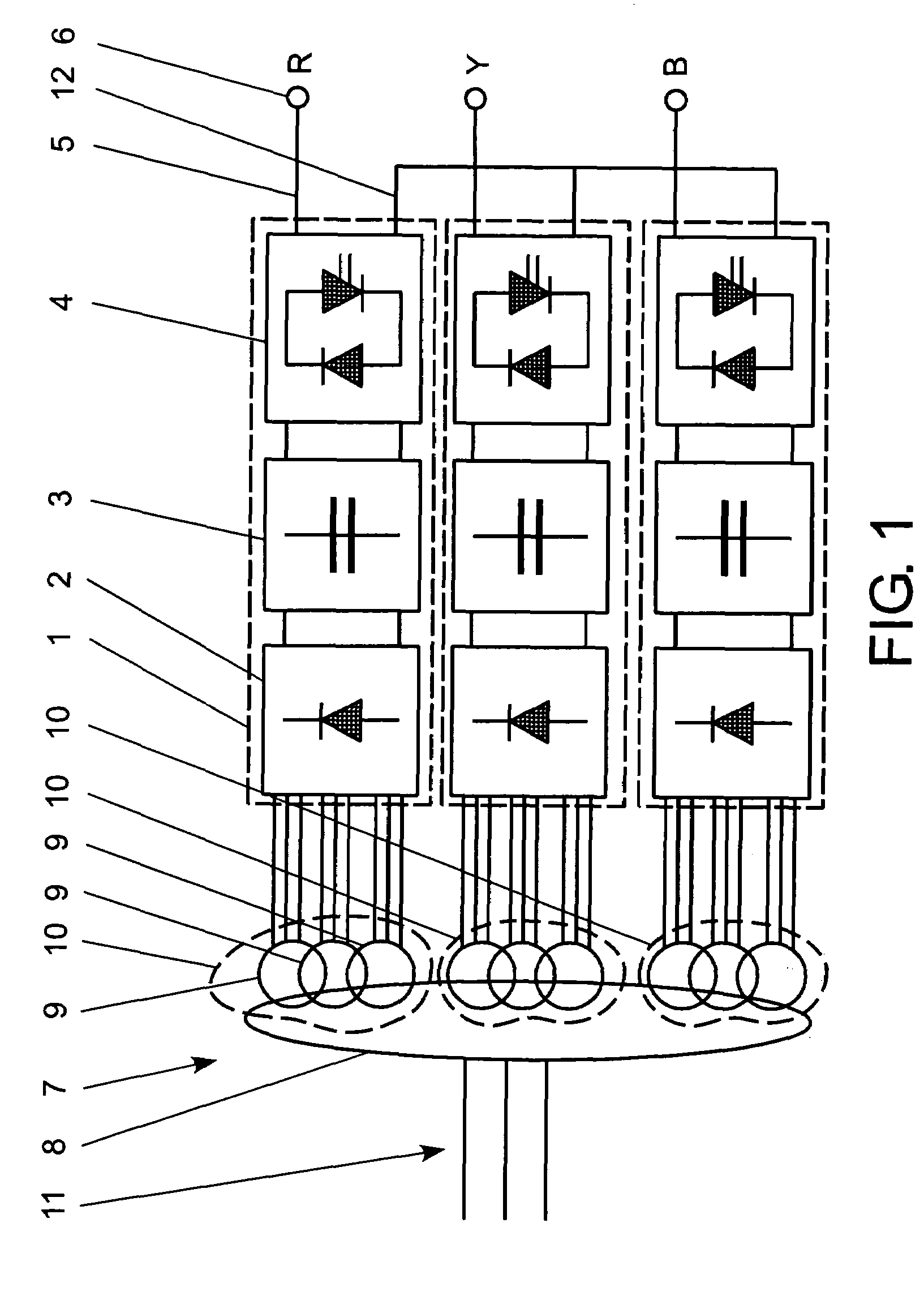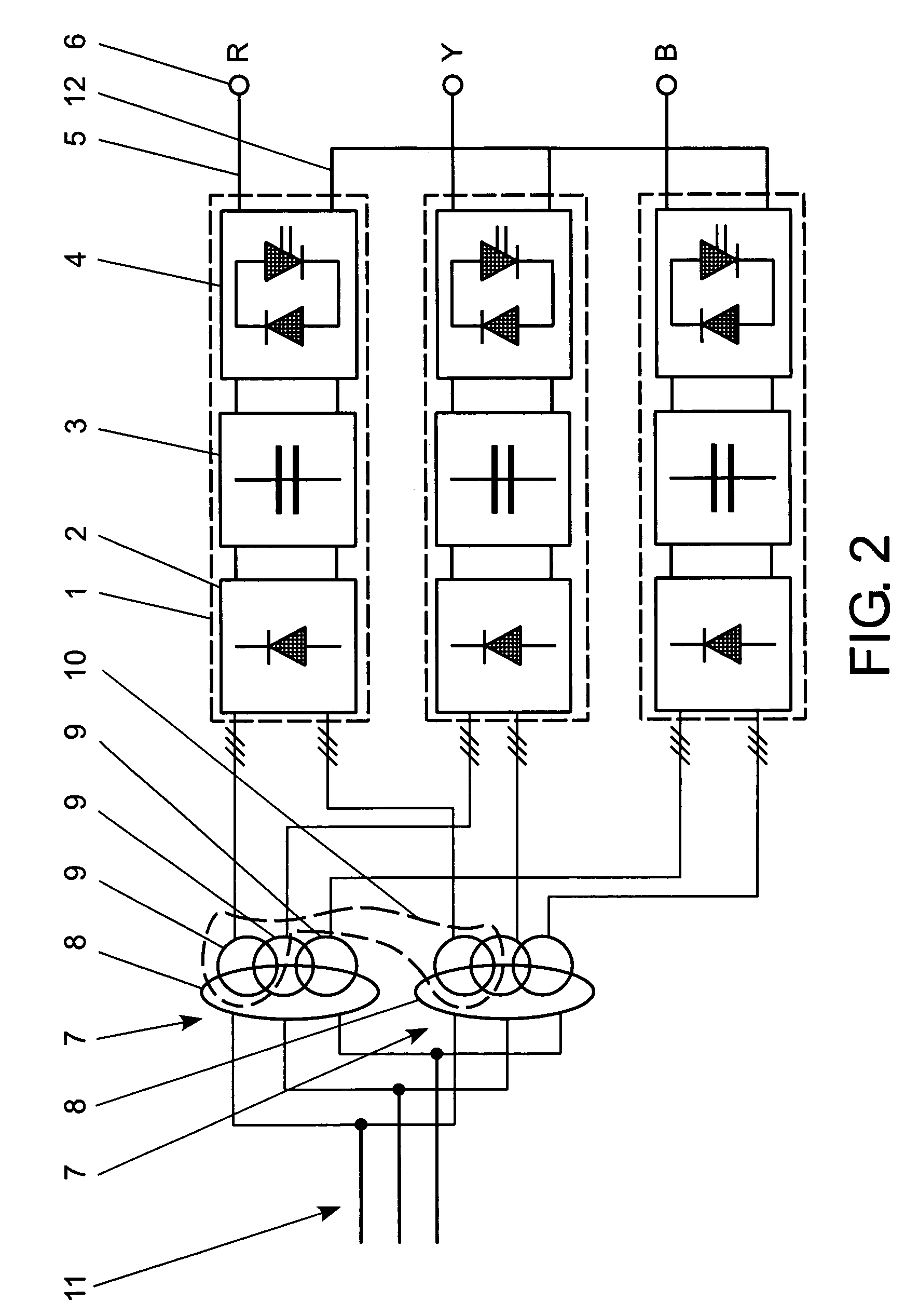Low-harmonics, polyphase converter circuit
a converter circuit and low-harmonic technology, applied in the field of power electronics, can solve the problems of placing a correspondingly severe load on the electrical ac voltage system, and the harmonic effect of the converter circuit is therefore highly undesirable, and achieve the effect of simple and robust design
- Summary
- Abstract
- Description
- Claims
- Application Information
AI Technical Summary
Benefits of technology
Problems solved by technology
Method used
Image
Examples
Embodiment Construction
[0023]FIG. 2 shows a first exemplary embodiment of the polyphase converter circuit. The converter circuit shown in FIG. 2 has p=3 phases R, Y, B, p≧3 phases R, Y, B generally being conceivable. As shown in FIG. 2, the converter circuit comprises a converter circuit element 1 provided for each phase R, Y, B, each converter circuit element 1 having a rectifier unit 2, a DC voltage circuit 3 which is connected to the rectifier unit 2 and an inverter unit 4 which is connected to the DC voltage circuit 4. The rectifier unit 2 shown in FIG. 2 has a pulse number of x=12, the pulse number x indicating the number of switching pulses during one period of the voltage of an electrical AC voltage system 11 which is connected on the input side to the converter circuit. Furthermore, a first AC voltage output 5 of each inverter unit 4 forms a phase connection 6. In addition, second AC voltage outputs 12 of the inverter units 5 shown in FIG. 2 are star-connected.
[0024]Accordingly, n transformers 7 c...
PUM
 Login to View More
Login to View More Abstract
Description
Claims
Application Information
 Login to View More
Login to View More - R&D
- Intellectual Property
- Life Sciences
- Materials
- Tech Scout
- Unparalleled Data Quality
- Higher Quality Content
- 60% Fewer Hallucinations
Browse by: Latest US Patents, China's latest patents, Technical Efficacy Thesaurus, Application Domain, Technology Topic, Popular Technical Reports.
© 2025 PatSnap. All rights reserved.Legal|Privacy policy|Modern Slavery Act Transparency Statement|Sitemap|About US| Contact US: help@patsnap.com



